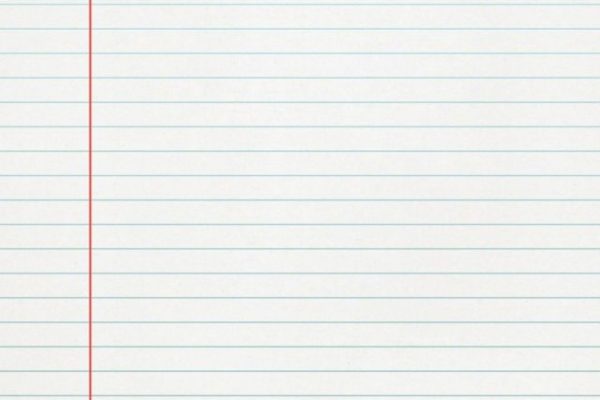One of the hardest things to do when study skills are not your strength, or when you are working to improve them, is to make sure you are taking accurate notes, and doing so consistently in all your classes. Teachers spend varying amounts of time on lectures, lecture in different styles, place differing levels of emphasis on notetaking, and may or may not have specific notetaking methods for you to use. This only makes it even more challenging to ensure that you take the best notes you possibly can and are able use them as a reference when completing assignments and as a source of review when preparing for a test, but it can be done. There are many ways to approach notetaking that can make it more useful to you, and as I have stated many times about various other study skills, figuring out what works for you is the best way to see increased success with it.
As with many of the study skills I write about in my blog, notetaking today is very different than it once was. Full-period lectures were the norm, with very little time given to question and answer reviews or discussions, let alone any of the demonstrations, examples, or group work that break them up now. Visuals were few and far between, and what the teacher said and/or wrote on the board was the only source of notes. Some teachers were better than others at making clear what information was most important to write down and what information could be omitted, but many of them spoke as if every word they said through the entire period was crucial, and made it very hard for students to discern otherwise. Some, though thankfully not many in my experience, also spoke way too fast, which meant that not only was there no time to determine what was and wasn’t crucial, there was little to no chance for the majority of students to even come close to writing all the basics down without forgetting half of what they heard before they could. As with many teaching methods and study skills that have since been updated to reflect the different learning styles and needs of students today, traditional notetaking was something that teachers were once taught to believe would work for every student, and little to no thought was given to how it could be made more flexible. Even if you do have some teachers who still expect a lot of notetaking and are very specific about how it should be done, there are things you can do to make your notes your own.
Since teachers are much more aware now of the need to be more flexible in their teaching, many of them already use less traditional and/or more flexible notetaking methods, and most of them will be fine with you tweaking their methods to suit your needs. Depending on how specific they are with their methods, as well as whether or how they incorporate notetaking into your grades, anything more than minor tweaks should probably be cleared with them in advance. This may require you to explain, or even show proof, that your learning style does not match well with their expectations, but if you come to them prepared to explain yourself, with a copy of your educational plan, a parent or other adult, and/or an example of something that has worked for you in the past or is currently working in another class to back you up, most teachers will not only listen to your concerns, they will do the best they can to accommodate you. By now, enough time has passed in the school year that if you did not realize you needed to ask permission to use alternative notetaking methods right away, or you do not have paperwork that informed teachers of notetaking accommodations they needed to make for you, you should have enough evidence of notes you did not find useful to ask to make a change if you feel you need to, or to make minor tweaks without asking if you think that will be enough to make a difference.
There are many things you can do to make your notetaking your own – changes both large and small – that can really make a difference and make your notes more useful to you. Highlighting and/or underlining key terms and points, starring or otherwise making anything teachers say is important or will definitely be on a test stand out, adding pictures and other visuals, and rewriting or typing notes to make them more legible can help. You can also go online and read the teacher’s posted notes, since that is an accommodation many of them now provide to all students, and you can download or print out your own copy and highlight or make other changes to them that you feel will help you. You can also use your teacher’s posted notes to fill in anything you may have missed when you wrote or typed notes during class, but unless you have formal permission to do so and an official accommodation in your paperwork to back it up, depending solely on a teacher’s printout of notes is not only not acceptable, it also isn’t a good idea if you are looking to improve your study skills. Just as I said in a previous post that reading over your notes should not be your only method of test preparation, listening to a teacher’s lecture and/or reading over his or her posted notes should not be the only way or ways you take in the information. Even if you are permitted to have a copy of the teacher’s notes in front of you, most teachers will expect you to highlight and/or fill in at least some information, both to make sure you are engaging with the lecture and to make sure you are participating as much as possible while your classmates are writing or typing their notes. Whether during or after a lecture, the best way to ensure that you are learning the information and will be able to use it is to engage with it as much as possible and in as many ways as possible, from the day of the lecture all the way until all assignments and tests relating to the material have been completed. The more you are able to do that, the more you will be able to learn, retain, and remember, throughout your schooling and beyond.
Just as with many other study skills, taking notes is a skill that you can make your own. Teachers rely less on notetaking than they once did, are more flexible in how they present it than they once were, and are more open to the various learning styles and needs of their students than they used to be. This gives you a great opportunity to make changes to their notetaking methods if you feel the need to do so, but it also places greater responsibility on you, not just to ask their permission to make all but the most minor tweaks to your notes, but also to rewrite or type them or do whatever else you need to do to make sure you are able to use them and learn from them. The more you engage with your notes, the more you will be able to depend on them, and the more able you are to depend on them, the more success you will see.

